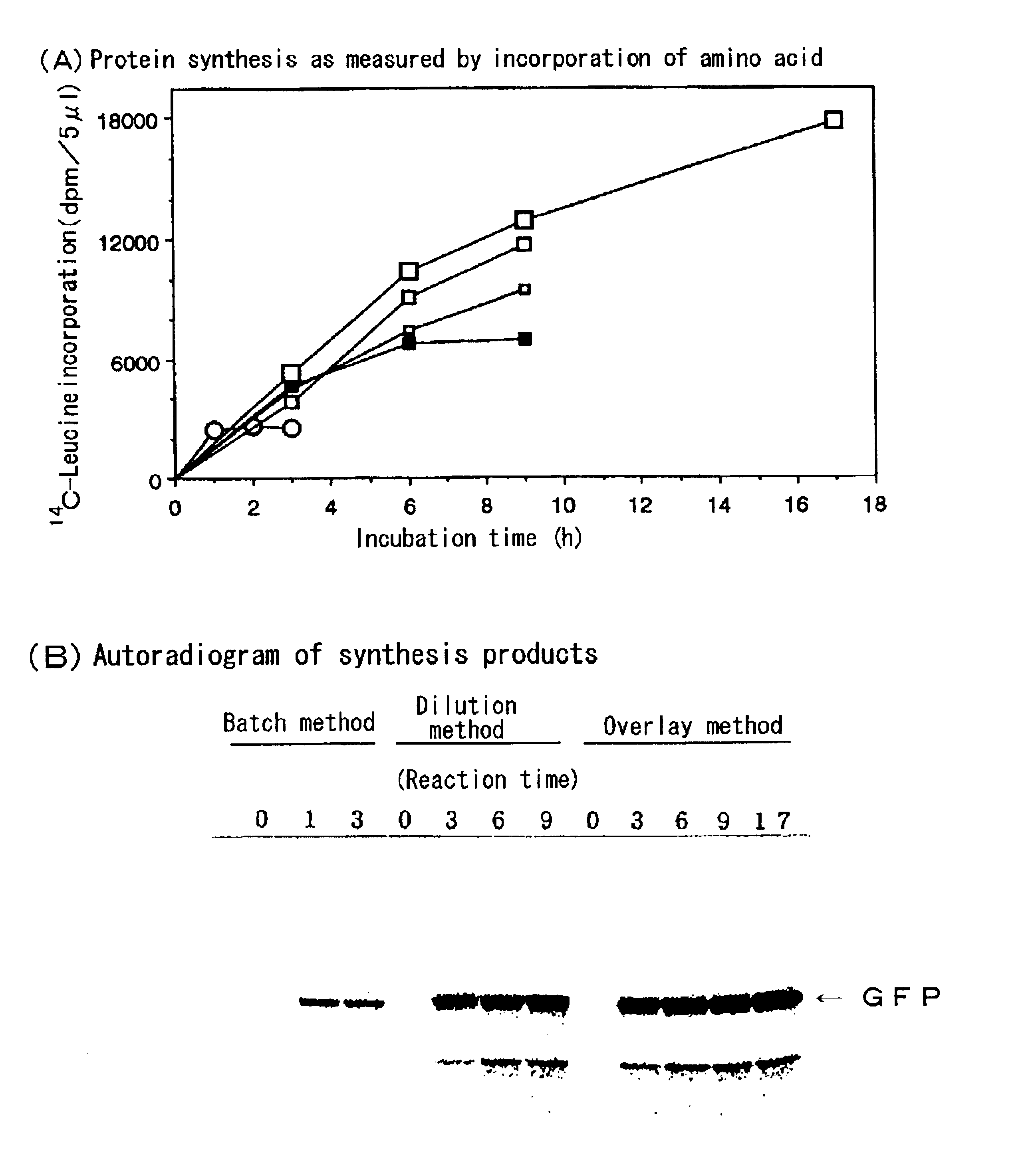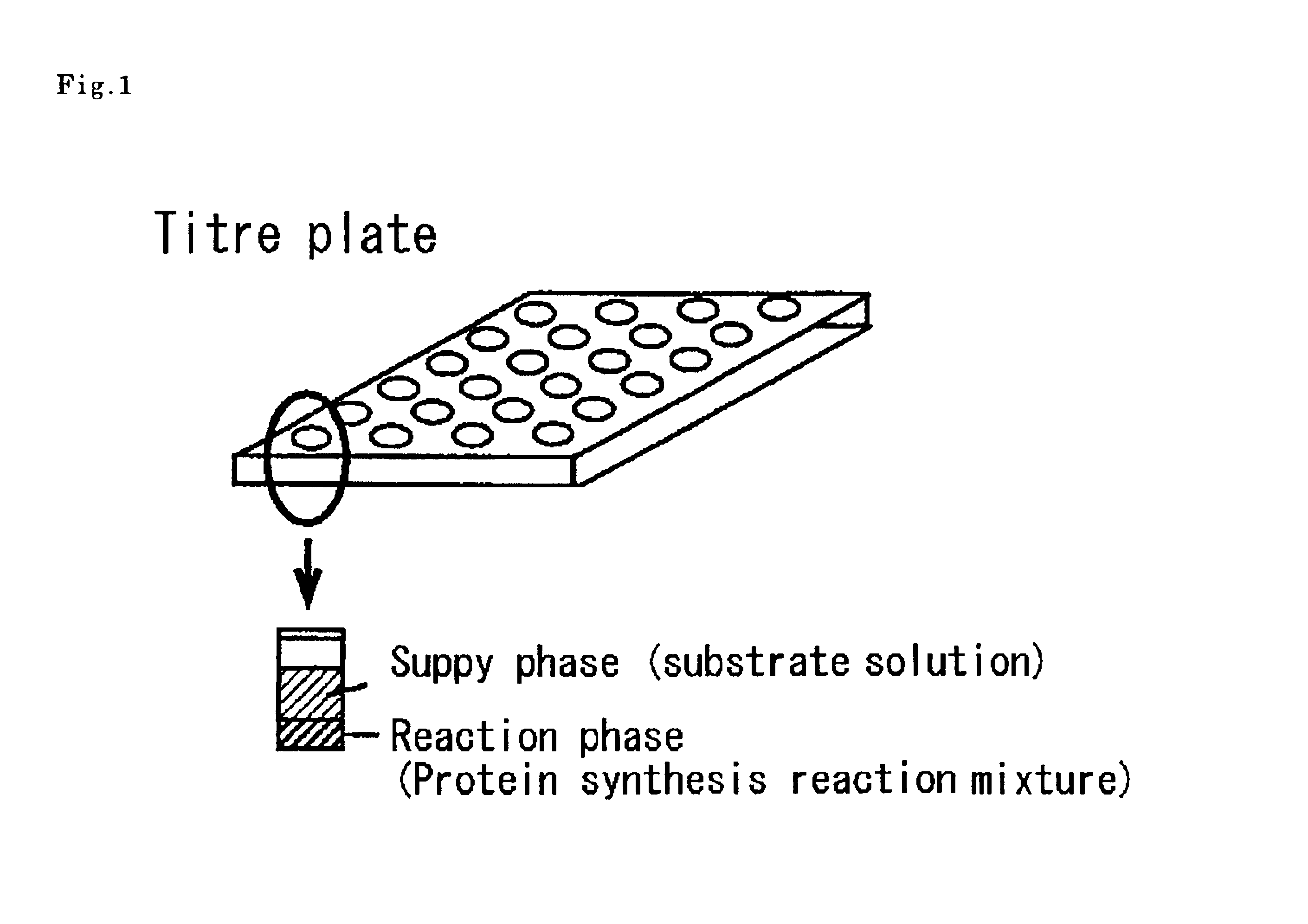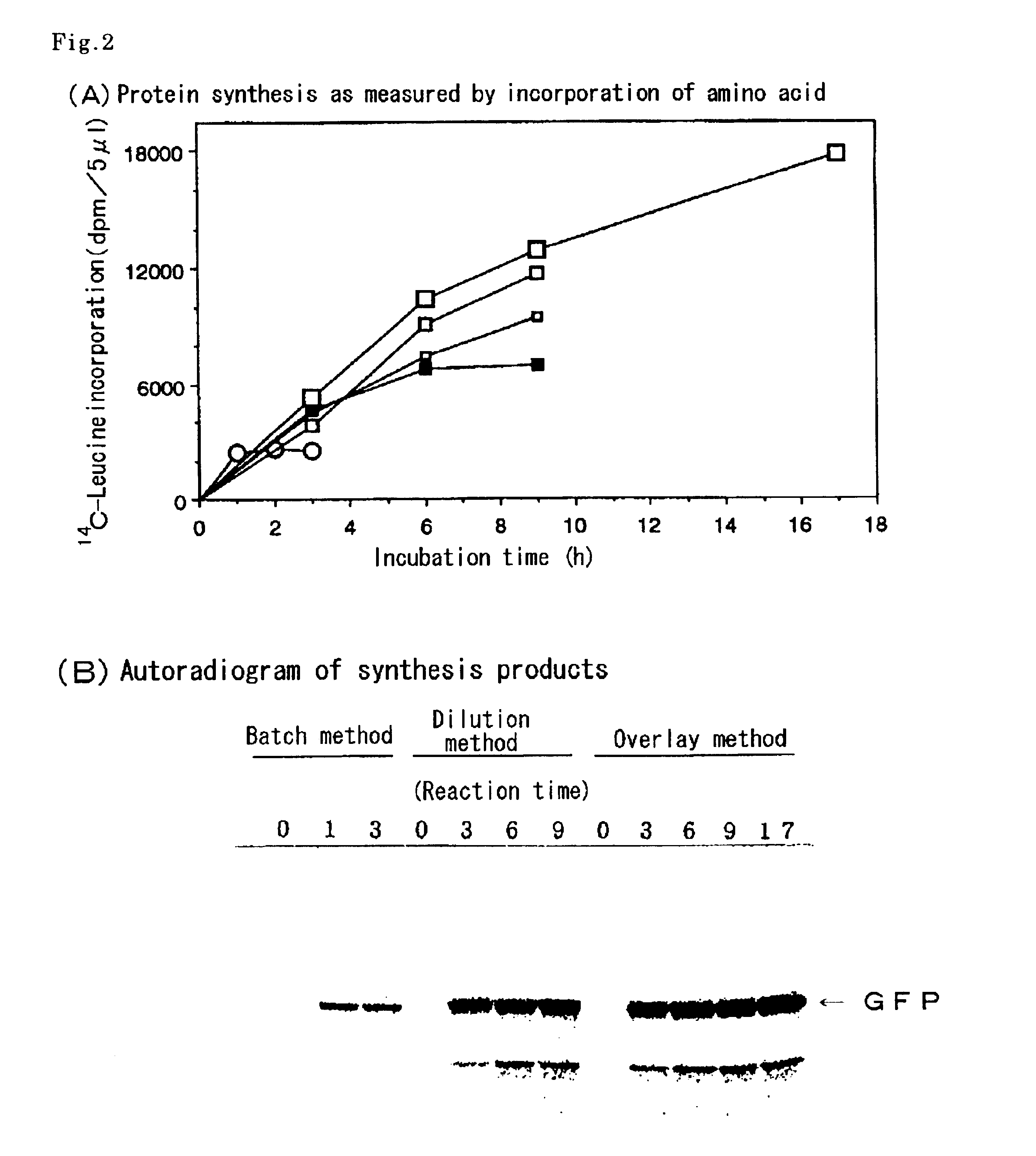Methods of synthesizing cell-free protein
a cell-free protein and protein technology, applied in the field of cell-free protein synthesizing a protein, can solve the problems of low protein synthesis efficiency, rapid degradation of cell-free extract during storage, and inability to synthesise proteins, etc., and achieve the effect of enhancing the reaction efficiency
- Summary
- Abstract
- Description
- Claims
- Application Information
AI Technical Summary
Benefits of technology
Problems solved by technology
Method used
Image
Examples
example 1
As an example of a diffusion continuous batch cell-free protein-synthesis method, the protein synthesis was carried out using a wheat-embryo extract by the multi-layered diffusion continuous batch method as illustrated in FIG. 1.
The wheat embryo extract was prepared according to Madin K. et al. [Proc. Natl. Acad. Sci. USA (2000), 97, 559-564; WO00 / 68412].
In addition, in order to synthesize an mRNA to be a translation template in the wheat-embryo cell-free protein-synthesis reaction, general plasmid pEU1 constructed by Endo (FIG. 6) (WO01 / 27260) was used. As a gene encoding the target protein, jellyfish green-fluorescent-protein (GFP) gene (gfp gene) was used, and was inserted into the above plasmid according to the conventional method. The obtained plasmid was cut with HindIII to give a linear form, which was used as a translation template to synthesize an mRNA according to the conventional method. The synthesized mRNA does not have CAP at 5′-end, has AMV-Ω sequence at 5′-end as non...
example 2
As one example of the dilution batch cell-free protein-synthesis method, the protein-synthesis reaction was carried out by carrying out a pre-incubation using a protein-synthesis reaction mixture containing the wheat embryo extract prepared in Example 1 and an mRNA encoding GFP by the conventional batch method at 26° C. for 15 min, adding five times volumes of the diluting solution to the resultant mixture, followed by further incubating the diluted mixture at 26° C. for 3, 6, or 9 h, wherein the diluting solution had the same composition as the supply solution prepared in Example 1, wherein the amount of protein synthesized was assayed in a manner similar to that of Example 1. Results are shown in FIG. 2A (▪-▪) and FIG. 2B.
As FIG. 2A shows, compared with the conventional batch method in which the synthesis reaction stops within 1 h (∘-∘), in case the cell-free protein synthesis was carried out by the dilution batch method, the synthesis reaction linearly progressed for 6 h after th...
example 3
It was demonstrated that a dihydrofolate reductase (DHFR) derived from Escherichia coli can be synthesized in addition to GFP synthesized in Example 1 by the diffusion continuous batch cell-free protein-synthesis method, and it was confirmed that this method is effective for the synthesis of general protein molecule species.
The protein synthesis was carried out in a manner similar to Example 1 using a protein-synthesis solution having a composition similar to that of Example 1 except that the mRNA was an mRNA encoding DHFR, giving the results shown in FIG. 3. The amounts of proteins synthesized were assayed using the incorporation of the radio isotope into a trichloroacetic acid-insoluble fraction as an index according to the conventional method, and proteins synthesized were identified by the SDS-polyacrylamide-gel electrophoresis and the staining with Coomassie Brilliant Blue (CBB) [Endo, Y. et al., (1992) J. Biotechnol., 25, 221-230][Proc. Natl. Acad. Sci. USA (2000) 97, 559-564]...
PUM
| Property | Measurement | Unit |
|---|---|---|
| diameter | aaaaa | aaaaa |
| concentration | aaaaa | aaaaa |
| concentration | aaaaa | aaaaa |
Abstract
Description
Claims
Application Information
 Login to View More
Login to View More - R&D
- Intellectual Property
- Life Sciences
- Materials
- Tech Scout
- Unparalleled Data Quality
- Higher Quality Content
- 60% Fewer Hallucinations
Browse by: Latest US Patents, China's latest patents, Technical Efficacy Thesaurus, Application Domain, Technology Topic, Popular Technical Reports.
© 2025 PatSnap. All rights reserved.Legal|Privacy policy|Modern Slavery Act Transparency Statement|Sitemap|About US| Contact US: help@patsnap.com



